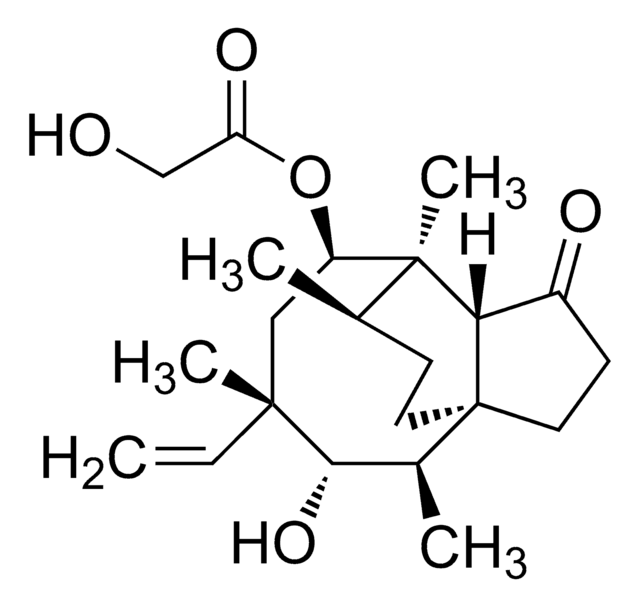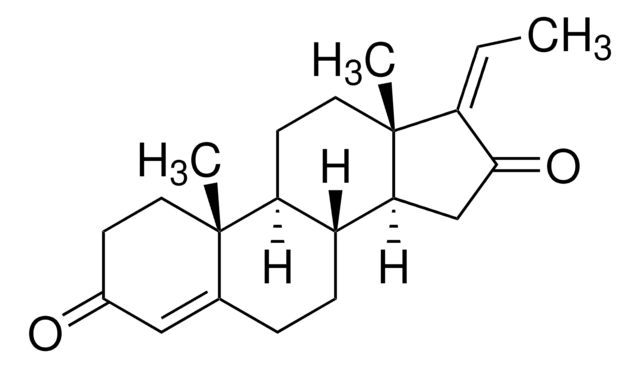SML0175
Pyrovalerone hydrochloride
≥98% (HPLC)
Sinónimos:
1-(4-Methylphenyl)-2-(1-pyrrolidinyl)-1-pentanone hydrochloride, Centroton, F 1983, Sp 1059, Thymergix
About This Item
Productos recomendados
Análisis
≥98% (HPLC)
formulario
powder
drug control
psicótropo (Spain); Decreto Lei 15/93: Tabela IV (Portugal)
color
off-white to light brown
solubilidad
H2O: ≥5 mg/mL at 60 °C
temp. de almacenamiento
2-8°C
InChI
1S/C16H23NO.ClH/c1-3-6-15(17-11-4-5-12-17)16(18)14-9-7-13(2)8-10-14;/h7-10,15H,3-6,11-12H2,1-2H3;1H
Clave InChI
MWRACNBZNVAJHE-UHFFFAOYSA-N
Aplicación
Acciones bioquímicas o fisiológicas
Características y beneficios
Palabra de señalización
Warning
Frases de peligro
Consejos de prudencia
Clasificaciones de peligro
Acute Tox. 4 Oral - STOT SE 3
Órganos de actuación
Central nervous system
Código de clase de almacenamiento
11 - Combustible Solids
Clase de riesgo para el agua (WGK)
WGK 3
Punto de inflamabilidad (°F)
Not applicable
Punto de inflamabilidad (°C)
Not applicable
Certificados de análisis (COA)
Busque Certificados de análisis (COA) introduciendo el número de lote del producto. Los números de lote se encuentran en la etiqueta del producto después de las palabras «Lot» o «Batch»
¿Ya tiene este producto?
Encuentre la documentación para los productos que ha comprado recientemente en la Biblioteca de documentos.
Artículos
We offer many products related to dopamine receptors for your research needs.
Nuestro equipo de científicos tiene experiencia en todas las áreas de investigación: Ciencias de la vida, Ciencia de los materiales, Síntesis química, Cromatografía, Analítica y muchas otras.
Póngase en contacto con el Servicio técnico



![4-{[(4-METHYLPHENYL)SULFONYL]OXY}BUTYL 4-METHYLBENZENESULFONATE AldrichCPR](/deepweb/assets/sigmaaldrich/product/structures/208/494/a5122b67-8573-4730-83f8-8a65b4e244a2/640/a5122b67-8573-4730-83f8-8a65b4e244a2.png)





